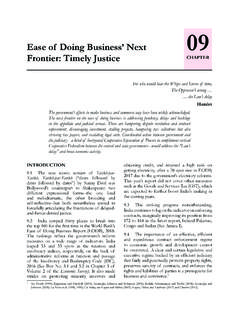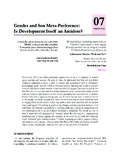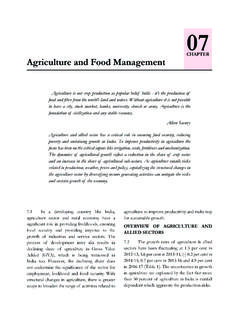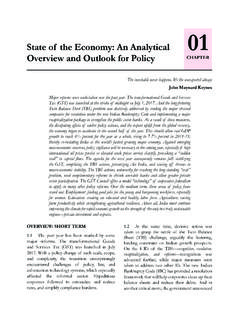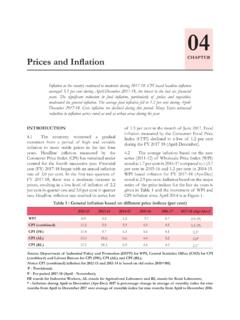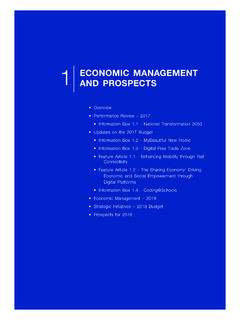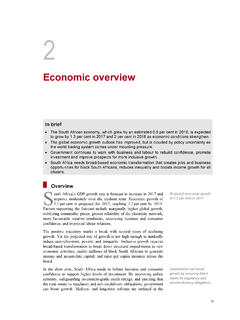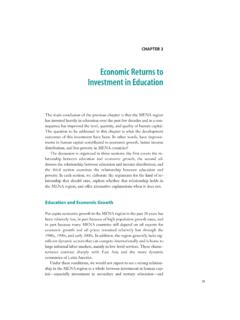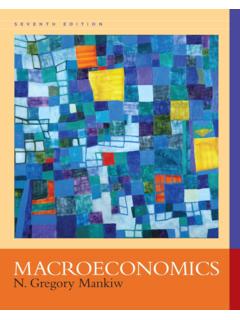Transcription of Is there a “Late Converger Stall” in 05 Economic ...
1 Is there a late Converger stall in Economic development ? can india Escape it? For all the gloom pervading the world, these are the best of Economic times for humanity and especially for those living in poorer countries. The global bads war, violence, deprivation and poverty are at unprecedentedly low levels (Pinker & Goldstein, 2016; Gates & Gates, 2014). Meanwhile, the global goods standards of living, access to essential services, and material well-being more generally have improved at a historically unprecedented pace to reach levels never witnessed in humanity s history. This is particularly true of india , which has been one of the world s most dynamic performers since 1980.
2 Economic convergence, the process of poorer countries catching-up with richer countries and closing gaps in standards of living, has been a big driver of some of these developments. Since the mid-1980s, the process of catch-up has broadened, as the number of poor countries growing faster than advanced economies has substantially increased. Furthermore, the rate of catch-up has also accelerated. In other words, there has been convergence with a vengeance (Subramanian, 2011). To see this, compare the number of countries that have grown faster than the United States (a proxy for the frontier country ) My dear, here we must run as fast as we can, just to stay in place.
3 And if you wish to go anywhere you must run twice as fast as thatLewis Carol, Alice in WonderlandThe first order fact about the developing world today is that this is an era of unprecedented prosperity. And that is true about india too which has been one of the most dynamic Economic performers in the world. A major driver of these good times, is Economic convergence, whereby poorer countries have grown faster than richer countries and closed the gap in standards of living. The convergence process has been broadening and accelerating for the last 20-30 years. However, while fears of a middle-income trap are overblown, could there be a slowdown in this process for lower-middle-income countries such as The possibility of such a late Converger stall arises because of four possible headwinds in the post-Global Financial Crisis era that were largely absent for the early convergers such as Japan and Korea.
4 These headwinds include: the backlash against globalization which reduces exporting opportunities, the difficulties of transferring resources from low productivity to higher productivity sectors (structural transformation), the challenge of upgrading human capital to the demands of a technology-intensive workplace, and coping with climate change-induced agricultural stress. india has so far defied these headwinds but can continue to do so only if the challenges are decisively 1960 -1980 and 1980-2017. The exercise also allows comparisons of how much faster these converging countries have grown in the two periods (Table 1).Table 1. Convergence With a Vengeance; Catch-Up with the United StatesPeriod1960 and 19801980 and 2017 Broadening: % of countries growing faster than US : Average excess growth rate over the in sample112153 Source: Maddison Project; IMF World Economic : Sample excludes oil exporters and small countries (defined as population< 1 mn.)
5 In 2010). india s own move up the development ranks is instructive to track. In 1960, india was a low-income country with a per capita income (in 2011 purchasing power parity (PPP) terms) of $1,033. This was equivalent to about 6 percent of per capita income at the time. However, india attained lower middle-income status in 2008 and today has a per capita income of $6,538, which is 12 percent of the If per capita income in india grows at percent per year, india would reach upper-middle income status by the mid -to- late 2020s. But, recently doubts about the convergence process have been articulated around the notion of a middle income trap. Definitions can themselves be traps so it is important to be careful about them.
6 there was a genuine low-income trap. For a long time, many poor countries were not catching up at all; they were growing more slowly than richer countries, which Pritchett (1997) termed as Divergence Big Time. Similarly, the middle income trap should, strictly speaking, have connoted that middle income countries would grow more slowly than what would be expected given their level of income ( , slower than richer countries), impeding the transition from middle income to high income status. The reasons for the trap/ stall were supposed to be twofold, operating as a kind of pincer. On the one hand, as countries attained middle income status, they would be squeezed out of manufacturing and other dynamic sectors by poorer, lower-cost competitors.
7 On the other hand, they would lack the institutional, human, and technological capital to carve out niches higher up the value-added chain. Thus, pushed from below and unable to grasp the top, they would find themselves doomed to, well, middle-income As it turned out, there was neither a middle income trap nor stall . Middle income countries as a group continued to grow as fast or faster than the convergence standard demanded (Aiyar, Duval, Puy, Wu, & Zhang, 2013; Pritchett & Summers, 2014; Roy, Kessler, & Subramanian, 2016). Indeed, some of them for example, Korea, Portugal, Poland, and Latvia graduated to high-income status.
8 The convergence process remained strong even in the last This is shown in figure 1. The years from 1980 to 2017 are divided into three periods: 1980 to 1997, the era of divergence in which low-income countries fell further behind; 1998 to 2007, an early period of convergence running from the East Asian financial crisis until the Global Financial Crisis; and 2008 to 2017, the most recent period of late convergence. In each period, growth rates for low-, lower middle-, upper middle-, and high-income countries are compared. Consistent with the focus on convergence to the rich-country frontier, these income groups are defined in terms of their relative position at the beginning of each period.
9 Low-income countries are those with real per Is there a late Converger stall in Economic development ? can india Escape it? | 69 70 | Economic Survey 2017-18 Volume 1capita GDP less than 5 percent of that in the in purchasing power parity terms; lower-middle income countries, those with per capita incomes 5-15 percent of the ; and upper-middle income countries, 15-35 percent. High-income countries are all those above that line including some above the United States income In these panels, the lines indicate the average growth rate during the period for each of the four income groups. First, the good news. In the two periods after 1997 (the middle and right panels) the average poor, lower-middle income, and upper middle-income country all grew faster than their high-income counterpart.
10 In that strict sense, there is no middle income trap in any period. Furthermore, there is a general downward slope of the lines from around 1997 onward, with the convergence process actually accelerating after 2008. The poorest have been growing faster than lower middle income countries, who have been growing faster than upper middle income countries who in turn have been growing faster than the richest. The developing world continues to catch up, so rapidly that one could call the process convergence with a vengeance .2 THE BUT .. The focus of this chapter is on the convergence process of lower middle income countries such as india that are attempting to make the transition to middle income status.

